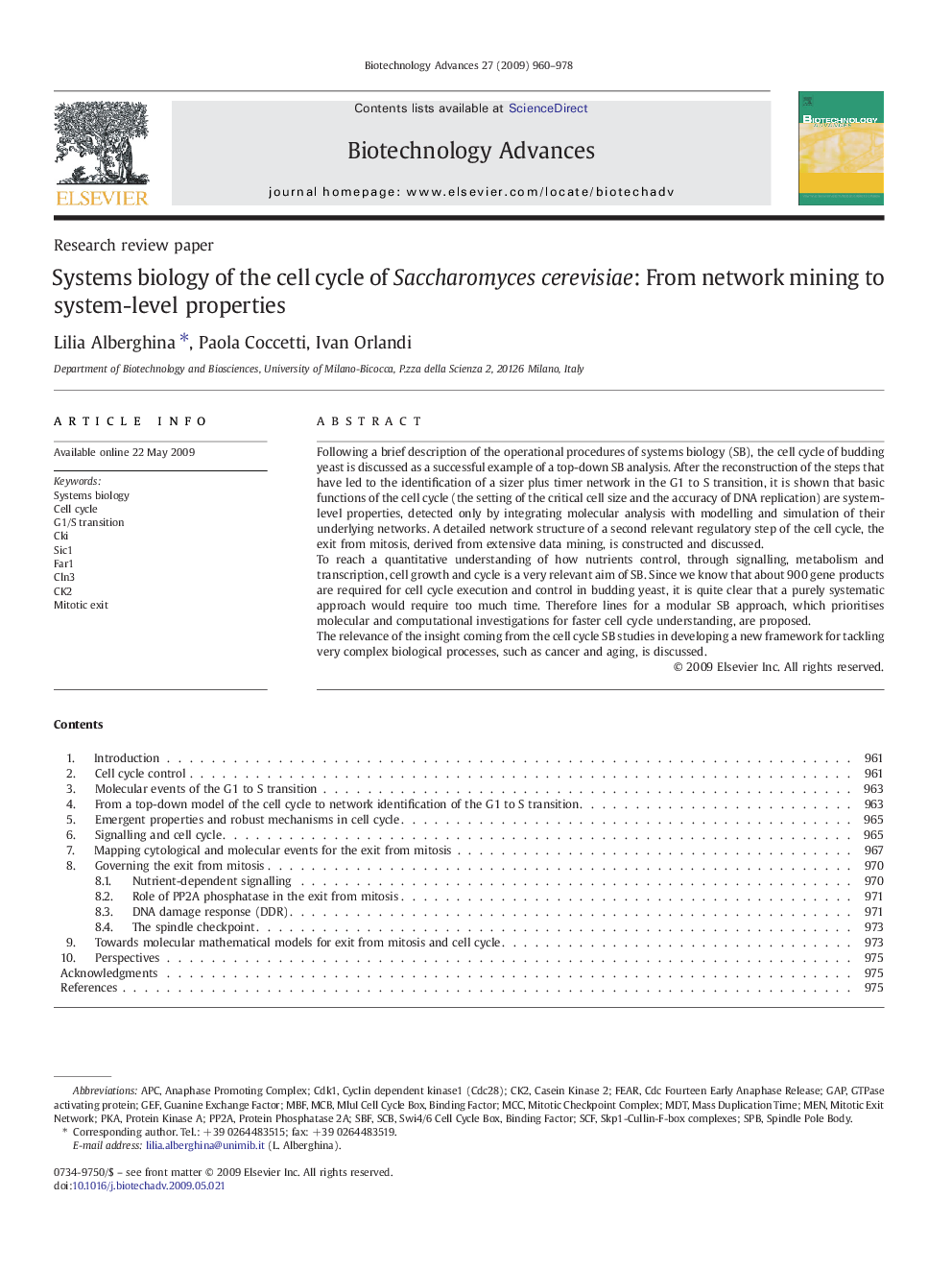| Article ID | Journal | Published Year | Pages | File Type |
|---|---|---|---|---|
| 14666 | Biotechnology Advances | 2009 | 19 Pages |
Following a brief description of the operational procedures of systems biology (SB), the cell cycle of budding yeast is discussed as a successful example of a top-down SB analysis. After the reconstruction of the steps that have led to the identification of a sizer plus timer network in the G1 to S transition, it is shown that basic functions of the cell cycle (the setting of the critical cell size and the accuracy of DNA replication) are system-level properties, detected only by integrating molecular analysis with modelling and simulation of their underlying networks. A detailed network structure of a second relevant regulatory step of the cell cycle, the exit from mitosis, derived from extensive data mining, is constructed and discussed.To reach a quantitative understanding of how nutrients control, through signalling, metabolism and transcription, cell growth and cycle is a very relevant aim of SB. Since we know that about 900 gene products are required for cell cycle execution and control in budding yeast, it is quite clear that a purely systematic approach would require too much time. Therefore lines for a modular SB approach, which prioritises molecular and computational investigations for faster cell cycle understanding, are proposed.The relevance of the insight coming from the cell cycle SB studies in developing a new framework for tackling very complex biological processes, such as cancer and aging, is discussed.
